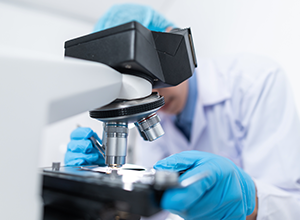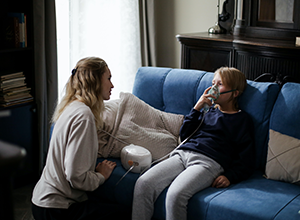Air, our body’s fuel
Air is the first element necessary for life. Breathing is a vital human function. Every day, about 15,000 liters of air pass through our respiratory tract, or about 9 liters of air per minute. When unfolded and laid out on a flat surface, our lungs represent an area of approximately 70 m². When we know that we breathe between 150 and 750 billion nanoparticles every day, it becomes essential to understand and treat the effects of air pollution. Today, the consequences of air pollution are multiple: lungs, heart, brain and much more. Each year, nearly 7 million deaths are attributable to exposure to outdoor and indoor air pollution.
The air contains the oxygen our organs need to function. It comes into our lungs, then is sent into the blood which carries it to all parts of our body. Thus, all the molecules of pollution, when they enter through our nose or our mouth, find a way to an area of our body and create a disturbance.

The effects of air pollution on health
Air pollution affects nearly all of us. It is estimated that nearly 7 million deaths are associated with outdoor and indoor air pollution, or about 12% of all deaths globally. Air pollution can affect everything and everyone. The WHO estimates that 36% of lung cancers are linked to pollution, 35% of COPD, 34% of strokes, 27% of heart disease. Even more frightening, today the WHO claims that 90% of the urban population does not breathe healthy air.
Environmental pollution (fine particles, carbon monoxide, sulfur dioxide, nitrogen oxide, ozone, benzene, hydrocarbons and heavy metals) is believed to be the cause of 3.7 million premature deaths worldwide. It is the main cause of death by cancer (28%), i.e. 31,000 deaths per year in France (increasing in women). An increase in cancer incidence is expected by 2030 (+45% to 190%). Regional mortality rates (world standardized) for lung cancer over the period 2004-08 vary from 36.6 per 100,000 in Midi-Pyrénées to 57.3 per 100,000 in Nord-Pas-de-Calais.
The pollution produced by factories, motor vehicles, agriculture or even natural phenomena (fires, pollens, volcanism, etc.) has a direct impact on respiratory and cardiovascular health. The size of the particles is related to their toxic potential. Pollutants induce the production of probiotic molecules responsible for peribronchial fibrosis, and metalloproteases responsible for emphysema.
Diesel represents a determining factor in the increased prevalence and morbidity of allergic diseases by acting not only on pre-established allergic responses but also on their genesis.
Pollution peaks increase mortality in patients with chronic cardio-respiratory conditions, increase emergency consultations and hospital admissions for respiratory and cardiovascular causes in patients with chronic respiratory failure, asthma, COPD, etc., and are associated with decreased ventilatory function in children. Children are particularly to be protected. Pregnant women must also take precautions to protect their child (many pollutants are present in cord blood).
Indoor air pollution is also very impactful for asthmatic or sensitive people. Allergens in our homes are indeed everywhere: plants, bedding, carpets, wet areas… We therefore talk a lot about moulds, dust mites, pollens, cleaning products, tobacco, home fragrances… We cannot insist enough on the need for ventilation in the home, a vital but not very widespread practice, and on the interest of staying well informed: knowing the critical periods for pollen emissions in the region, reading the labels of household products… to Avoid errors or risky practices!
Source: www.pasteur-lille.fr













